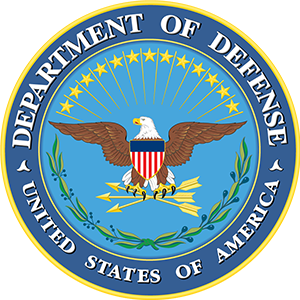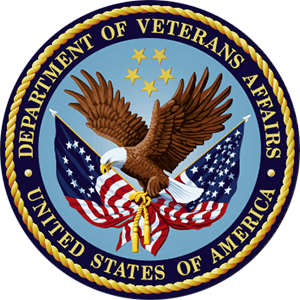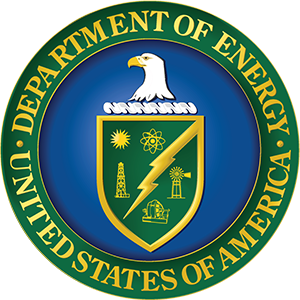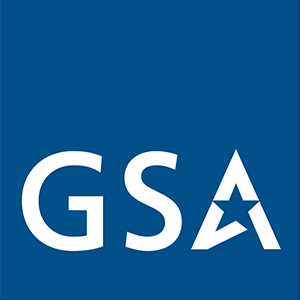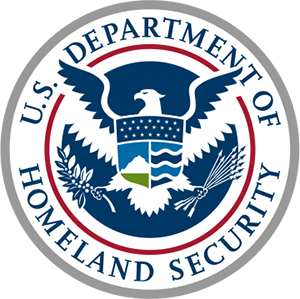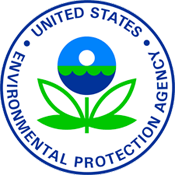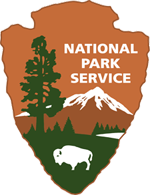Introduction
Within This Page
To participate in the National Flood Insurance Program (NFIP), communities must adopt and enforce floodplain management regulations that meet or exceed NFIP floodplain management requirements. The NFIP Technical Bulletins provide guidance for complying with the NFIP's building performance requirements 44 CFR Parts 59.1 and 44 CFR Parts 60.3. The bulletins help State and local officials interpret the NFIP Regulations for buildings and structures and are also useful resources for homeowners, insurance agents, building professionals and designers.
These requirements are intended to prevent loss of life and property, as well as economic and social hardships, that result from flooding. The latest information and updates to the Technical Bulletins can be found at the NFIP Technical Bulletins website.
Description
An important National Flood Insurance Program (NFIP) objective is protecting buildings constructed in Special Flood Hazard Areas (SFHAs) from damage caused by flooding. The SFHA is the land area subject to flooding by the base flood. The base flood is the flood that has a 1 percent chance of being equaled or exceeded in any given year (commonly called the “100–year” flood). SFHAs are shown on Flood Insurance Rate Maps (FIRMs) prepared by FEMA as Zones A and V.
The NFIP floodplain management regulations, contained in 44 CFR § 60.3, Flood plain management criteria for flood–prone areas, includes minimum building design criteria that apply to new construction; improvements, alterations, and additions determined to be Substantial Improvements; and the repair of buildings determined to have incurred Substantial Damage.
A defining characteristic of the NFIP regulations applicable in Zone A is the requirement for the lowest floor (including basement) to be elevated to or above the base flood elevation (BFE). Non–residential buildings in Zone A must be elevated or dry floodproofed. The requirements in Zone V also specify building elevation, foundation and enclosure requirements.
In addition to complying with the NFIP requirements, all new construction, Substantial Improvements, and repair of Substantial Damage must comply with the applicable building codes and standards adopted and enforced by States and communities.
The International Codes® (I–Codes®), published by the International Code Council® (ICC®) is a family of codes that includes the International Residential Code® (IRC®), International Building Code® (IBC®), International Existing Building Code® (IEBC®), and codes that govern the installation of mechanical, plumbing, fuel gas service, and other aspects of building construction. FEMA has deemed that the latest published editions of the I–Codes meet or exceed NFIP requirements for buildings and structures. Excerpts of the flood provisions of the I–Codes are available on FEMA's Building Code Resource webpage.
FEMA revises or develops new TBs as needed to provide guidance to State and local government officials, design professionals, and builders to help them meet NFIP requirements. TBs contain information on how to meet minimum NFIP floodplain management criteria, best practices, building codes and standards, and relevant NFIP flood insurance considerations.
|
Technical Bulletin 0, User’s Guide to Technical Bulletins Provides an introduction and background of the TBs, includes the intended audience, purpose, and synopses of available TBs. TB 0 also contains a discussion on how to use the TBs; crosswalk of NFIP regulations and the TBs; key concepts and requirements used in the TBs; key terms and useful resources; supplemental information, including how to obtain copies of the TBs; FEMA Regional Office locations; and a key word/subject index for the TBs. |
|
Technical Bulletin 1, Openings in Foundation Walls and Walls of Enclosures Below Elevated Buildings in Special Flood Hazard Areas Provides guidance on the NFIP requirements concerning the requirements for openings in foundation walls for buildings with enclosures below the BFE and located in SFHAs shown on FIRMs as Zones A, AE, A1–A30, AR, AO, and AH. |
|
Technical Bulletin 2, Flood Damage–Resistant Materials Requirements for Buildings Located in Special Flood Hazard Areas Provides guidance on the NFIP requirements concerning the required use of flood–damage resistant construction materials for building components located below the BFE in SFHAs (both Zones A and V). |
|
Technical Bulletin 3, Non–Residential Floodproofing — Requirements and Certification for Buildings Located in Special Flood Hazard Areas Provides guidance on the NFIP requirements concerning watertight construction and the required certification for floodproofed non–residential buildings in Zones A, AE, A1–A30, AR, AO, and AH whose lowest floors are below the BFE. |
|
Technical Bulletin 4, Elevator Installation for Buildings Located in Special Flood Hazard Areas Provides guidance on the NFIP requirements for elevator machinery and equipment that serve buildings and on the installation of elevators below the BFE in SFHAs (both Zones A and V). |
|
Technical Bulletin 5, Free–of–Obstruction Requirements for Buildings Located in Coastal High Hazard Areas Provides guidance on the NFIP requirements concerning obstructions to floodwaters below elevated buildings and on building sites in Coastal High Hazard Areas (Zones V, VE, and V1–V30). |
|
Technical Bulletin 6, Below–Grade Parking Requirements for Buildings Located in Special Flood Hazard Areas Provides guidance on the NFIP regulations concerning the design of below–grade parking garages beneath buildings located in Zones A, AE, A1 –A30, AR, AO, and AH. |
|
Technical Bulletin 7, Wet Floodproofing Requirements for Structures Located in Special Flood Hazard Areas Provides guidance on the NFIP regulations concerning wet floodproofing of certain types of structures located in Zones A, AE, A1–A30, AR, AO, and AH. |
|
Technical Bulletin 8, Corrosion Protection for Metal Connectors and Fasteners in Coastal Areas Provides guidance on the need for, selection of, and use of corrosion–resistant metal connectors for the construction of buildings in coastal areas. Maintaining a building’s load path is important and corrosion protection of metal connectors and fasteners has an important role in ensuring that buildings in coastal areas are adequately anchored and connected to resist flood and wind loads. |
|
Technical Bulletin 9, Design and Construction Guidance for Breakaway Walls Below Elevated Buildings Located in Coastal High Hazard Areas Provides prescriptive, simplified, and performance–based design approaches to meeting NFIP requirements in the design and construction of wood–frame and masonry breakaway walls beneath elevated buildings in Coastal High Hazard Areas (Zones V, VE, and V1 – 30). |
|
Technical Bulletin 10, Ensuring That Structures Built on Fill In or Near Special Flood Hazard Areas Are Reasonably Safe From Flooding Provides regulatory and technical guidance on ensuring that the construction of the following buildings are reasonably safe from flooding: buildings with various types of foundations, including basements, in areas removed from the SFHA through the placement of fill and in areas near the SFHA. |
|
Technical Bulletin 11, Crawlspace Construction for Buildings Located in Special Flood Hazard Areas Provides interim guidance on minimum NFIP requirements and best practices for crawlspace construction, including requirements for below–grade crawlspace construction that may extend 1 or 2 feet below grade when allowed by local ordinance. |
Application
FEMA Technical Bulletins apply to buildings (residential and non–residential) within the SFHA that are new construction; improvements, alterations, and additions determined to be Substantial Improvements; and the repair of buildings determined to have incurred Substantial Damage.
New construction: As used by the NFIP, the term “new construction” includes any building that was built after the date a community adopted its first floodplain management regulations and any subsequent improvements to such buildings.
Substantial Improvement: Any reconstruction, rehabilitation, addition, or other improvement of a structure, the cost of which equals or exceeds 50 percent of the market value of the structure before the “start of construction” of the improvement. This term includes structures which have incurred “substantial damage”, regardless of the actual repair work performed. The term does not, however, include either:
- Any project for improvement of a structure to correct existing violations of state or local health, sanitary, or safety code specifications which have been identified by the local code enforcement official and which are the minimum necessary to assure safe living conditions or
- Any alteration of a “historic structure”, provided that the alteration will not preclude the structure's continued designation as a “historic structure.”
Substantial Damage: Damage of any origin sustained by a structure whereby the cost of restoring the structure to its before damaged condition would equal or exceed 50 percent of the market value of the structure before the damage occurred.
Emerging Issues
FEMA’s knowledge and understanding of disaster resistant codes and standards has grown significantly. In addition, the International Codes and American Society of Civil Engineers standards have developed in parallel. As a result, the Technical Bulletins are being modernized in order to continue providing a valuable reference to State and local officials responsible for interpreting and enforcing NFIP regulations. The current Bulletins suffered from known issues identified by a wide range of stakeholders. The updates will address these issues to improve the bulletin’s credibility and content by coordinating closely with numerous stakeholders. If you are interested in assisting with the review and development of the Bulletins that are in–progress, reach out to FEMA HQ’s Jonathan Westcott.
FEMABuilding Science Branch develops and produces guidance that focuses on creating disaster–resilient communities to reduce loss of life and property. FEMA's Mitigation Assessment Team Program (MAT) conducts post–disaster engineering investigations for both man–made and natural hazard events, which assists in developing and improving publications, guidance materials, tools, Technical Bulletins, and recovery advisories that incorporate the most up–to–date building codes, floodproofing requirements, seismic design standards, and wind design requirements for new construction and the repair of existing buildings.
Relevant Codes and Standards
Federal Requirements: National Flood Insurance Act of 1968, as amended (42 U.S. Code §§ 4011 et seq.)
Additional Resources
Federal Emergency Management Agency (FEMA) The Federal Emergency Management Agency is an agency of the United States Department of Homeland Security.
National Flood Insurance Program – The National Flood Insurance Program aims to reduce the impact of flooding on private and public structures. It does so by providing affordable insurance to property owners, renters and businesses and by encouraging communities to adopt and enforce floodplain management regulations. These efforts help mitigate the effects of flooding on new and improved structures. Overall, the program reduces the socio–economic impact of disasters by promoting the purchase and retention of general risk insurance, but also of flood insurance, specifically.
FEMA Building Science Branch – The FEMA Building Science Branch provides technical services for the Federal Insurance and Mitigation Administration (FIMA). The branch develops and produces multi–hazard mitigation guidance that focuses on creating disaster–resilient communities to reduce loss of life and property. Building Science Branch activities include deploying Mitigation Assessment Teams to conduct post–disaster engineering investigations for both man–made and natural hazard events. Building Science takes a lead role in developing publications, guidance materials, tools, technical bulletins, and recovery advisories that incorporate the most up–to–date building codes, floodproofing requirements, seismic design standards, and wind design requirements for new construction and the repair of existing buildings. In addition to providing technical support for the development and adoption of model building codes and standards, Building Science Branch provides technical support for the National Flood Insurance Program (NFIP) for public and private sector stakeholders, the National Earthquake Hazards Reduction Program (NEHRP), the National Windstorm Impact Reduction Program (NWIRP) and is pursuing outreach strategies for communicating building science issues.
NFIP Technical Bulletins – The National Flood Insurance Program (NFIP) Technical Bulletins provide guidance for complying with the NFIP’s building performance requirements (contained in Title 44 of the U.S. Code of Federal Regulations at Section 60.3). The bulletins help State and local officials interpret the NFIP Regulations and are also useful resources for homeowners, insurance agents, building professionals and designers.
International Codes – In addition to complying with the NFIP requirements, all new construction, Substantial Improvements, and repair of Substantial Damage must comply with the applicable building codes and standards adopted and enforced by States and communities. The I-Codes include flood requirements.
American Society of Civil Engineers (ASCE) Standard 24, Flood Resistant Design and Construction – ASCE 24 is a referenced standard in the I-Codes. ASCE 24 states the minimum requirements and expected performance for the siting and design and construction of buildings and structures in flood hazard areas that are subject to building code requirements.

